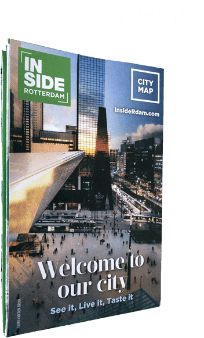Home to sailors, prostitutes and Chinese labourers
It’s a hip and happening place these days, but not all that long ago, Katendrecht was a fairly insalubrious part of town. During the Second World War, it was even considered a no-go area by the occupiers because of suspected disease outbreaks.
Words: Evelien Baks
In the past, the district referred to by Rotterdammers as ‘the left bank’ was not a very desirable part of town – an opinion which is still shared by some. In recent years, however, there has been a massive shift in the perception of Kop van Zuid due to the construction of the impressive Erasmus Bridge (which opened up access to this southern part of the city) and the 21st-century metamorphosis of the Kop van Zuid peninsula. Suddenly, it’s the place to be.
Flowing on from the creation of Rotterdam’s ‘Manhattan’, as the Kop van Zuid is affectionately called, neighbouring Katendrecht is also undergoing a renaissance. It was desperately needed, some say. Others believe that the ‘yuppies’ have had far too much say in the whole process. In that regard, they make a valid point, as Katendrecht is no longer the non-conforming, unregulated outpost it was in days gone by. A place where dockworkers once slogged away, as did the many prostitutes working there. Where sailors swarmed and immigrants settled. Back in the day, Katendrecht had the honour of being the first Chinatown in Europe. It was also the epicentre of prostitution.
SILO
Towards the end of the 19th century, Katendrecht was still a green oasis lying at the outskirts of the city. Unsurprisingly, well-to-do Rotterdam families set up their country homes there; from the city, it was a convenient location to travel to for a breath of fresh country air. Until the municipality eyed up this beautiful piece of land for the expansion of its port activities. The Maashaven and Rijnhaven were dug out, creating a peninsula that was soon christened De Kaap. When visiting Katendrecht, cast your eyes across to the other side of the Maashaven and notice the massive Maassilo. Back in 1910, this building was the largest reinforced concrete building in the Netherlands and later became the largest grain silo in Europe.
As for the red-light district … history tells us that the first Chinese workers began arriving in Katendrecht in 1911 when sailors in Rotterdam and Amsterdam were holding a major strike. To keep the ports running, immigrant labour was brought in from England. More and more Chinese rapidly crossed the channel, and it wasn’t long before Katendrecht became known as ‘Chinatown’. Playhouses, eateries, boarding houses and sailors’ bars sprung up everywhere. And with so many potential clients, prostitution also made a rapid crossing from the city centre to De Kaap.
When Rotterdam’s centre was bombed during the Second World War, many entertainment venues needed to be relocated, therefore setting into the area. For German soldiers and marines, however, the neighbourhood was a no-go zone because it was considered far too dangerous. This helped Jewish people go into hiding there.
WRESTLING
With the rebuild and revitalisation of a large chunk of Katendrecht, yuppies and hipsters have embraced the neighbourhood en masse. However, the area’s original character is still very much present. Check out the Belvédère Verhalenhuis, located directly behind the Deliplein, where the swinging beats of 1930s jazz greats once rang out and genuine wrestling matches were once held. The venue’s current-day entertainment schedule continues to run from Friday to Sunday (despite renovations).
Wander along to Theater Walhalla, once a glorious dance palace and now a live theatre. Observe the beautiful façades of the buildings flanking the Deliplein, the neighbourhood’s most attractive town square. Stop off for a drink at Café De Ouwehoer’s plush red interior, or head into the Fenix Food Factory. If you are thinking about getting a tattoo, check out Tattoo Bob, a long-standing establishment visited for decades by those wanting to get an anchor emblazoned on their upper arm.
Other things to do at Katendrecht include enjoying dim sums at Wing Wah (a household name on Atjehstraat), tucking into a traditional sandwich at Bakkerswerkplaats and playing pinball at the unique Dutch Pinball Museum.
It is our good fortune that, even to this day, Katendrecht has still managed to hold on to some of its original rough-and-ready character and charm.
Picture by Hester Blankestijn















